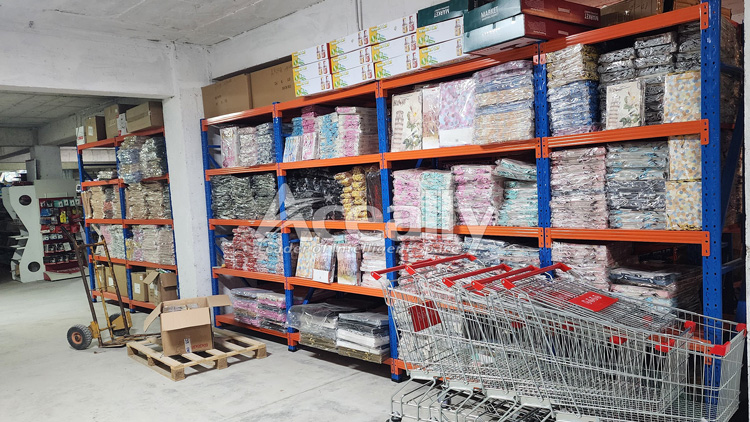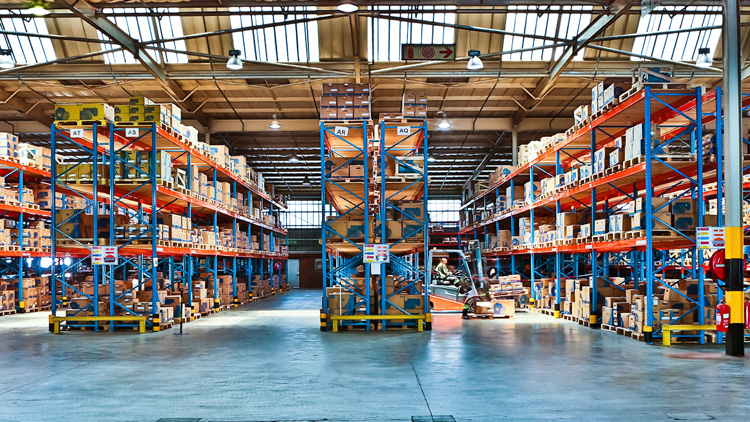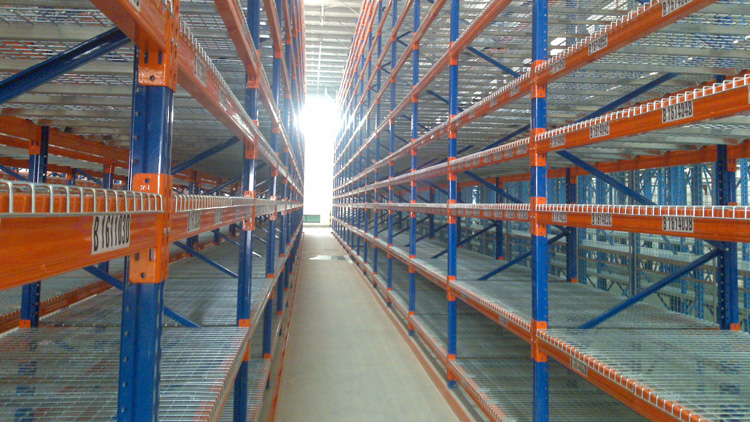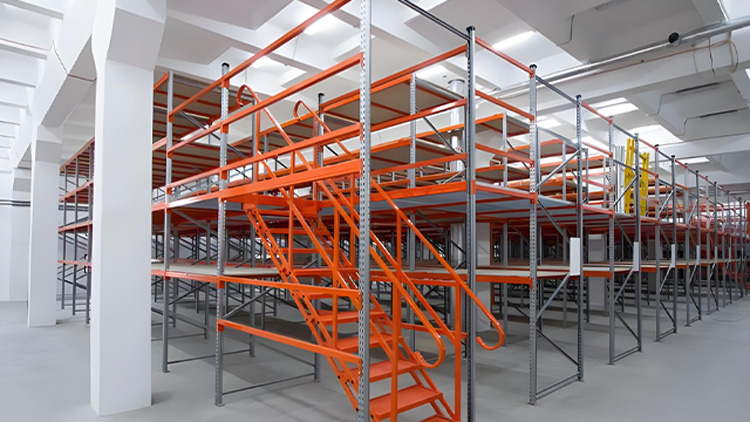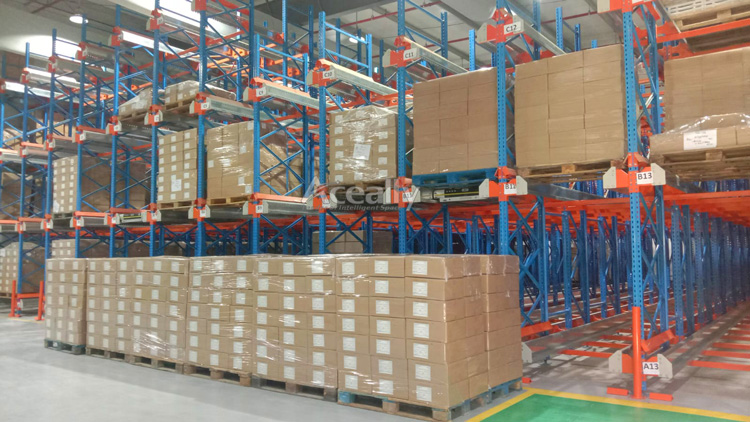Drive in racking is also called drive through racking or drive in drive through racking. The drive in racking can be used for forklift (or unmanned carrier with fork) to drive into the channel to access goods. The drive in racking can provide the maximum storage capacity with the minimum space. The structural principle of the drive in racking is to connect several rows of columns, without a cross beam structure, supported by a top beam, and connected by a bracket and a pallet guide rail. The pallet goods are on the pallet guide rail. Forklifts can directly drive into the aisle to access goods. When storing goods, they should be inside first and then outside. When picking up goods, they should be outside first and then inside. Typical storage managers should be first in and then last out.
In addition to the storage space near the passage, the forklift truck needs to enter the interior of the warehouse rack to access the goods. Generally, it is recommended that the depth of single side picking should not exceed 7 storage spaces. In order to improve the operation speed of forklift, guide rails can be selected and configured according to actual needs. Compared with the warehouse rack, the warehouse space utilization rate of the drive in rack can be increased by more than 30%. The drive in racking is widely used in the wholesale, cold storage, food and tobacco industries. Such as the storage of large quantities of goods with few varieties, such goods are packaged uniformly and products are single, such as food, tobacco, household appliances, chemical, clothing cold storage and other warehouses.

Structural features of drive in racking
1. On the support rails, pallets are stored in the depth direction, one after another, which makes high-density storage possible.
2. The goods can be accessed from the same side of the racking. The balance weight and forward moving forklift can easily drive into the middle of the warehouse racking to access the goods without occupying multiple channels.
3. This kind of warehouse racking is suitable for storing large quantities of goods with few varieties.
4. The drive in racking is a fully inserted and assembled structure, and the column is a fabricated structure. The total depth of the warehouse racking in the wall area can be designed to be within 7 pallet depths at most, and the total depth of the warehouse rack in the middle area that can be accessed on both sides is usually within 9 pallet depths, so as to improve the efficiency and reliability of forklift access.
5. Drive in racking is widely used in various warehouses and logistics centers, such as food, tobacco, dairy, beverage and other industries. It is also more common in cold storage.
Applications of drive in racking pallet
Drive in racking is the master of pallet application. As the drive in rack is a continuous whole warehouse rack that is not separated by channels, the use of pallets is also continuous, which also reduces obstacles and greatly improves the ability to store goods. In use, pallets can be arranged in one direction and two directions. The total depth of one-way (wall area) rack shall be controlled within 6 pallet depths as far as possible, and the total depth of two-way (middle area can be taken from both sides) rack shall be controlled within 12 pallet depths as far as possible, so as to improve the efficiency and reliability of forklift access. As for the choice of metal pallet or plastic pallet, you can combine your own comprehensive consideration and then determine.
Precautions for purchasing drive in racking
1. Understand the pallet size, fork entry direction, pallet bearing capacity, and the maximum weight of goods to be stored in each pallet position.
2. Warehouse size, height, fire hydrant position, entrance and exit position, etc.
3. Comprehensive data of forklift, maximum lifting height, maximum weight, forklift width, etc.
